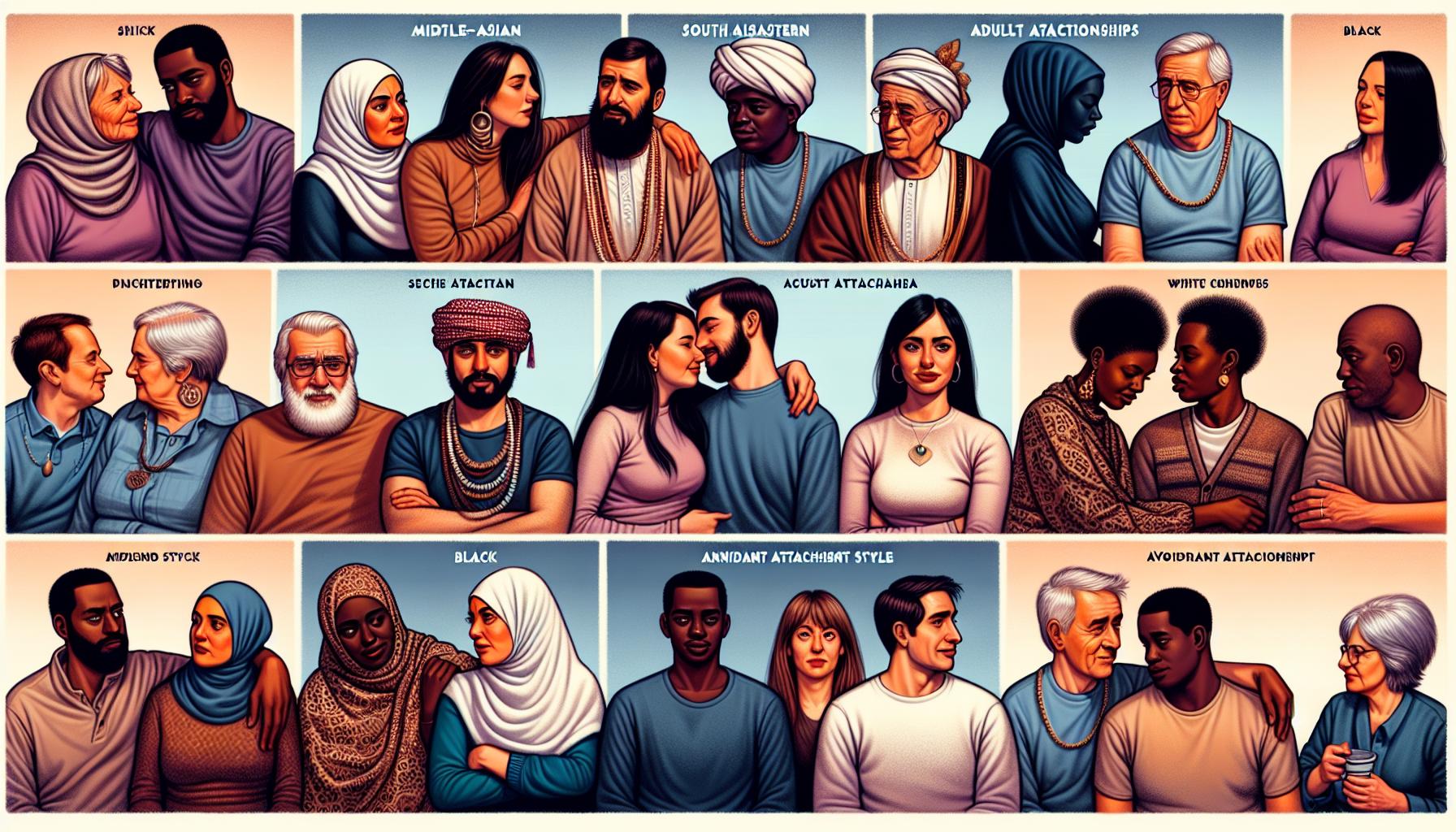Diving into “Becoming Attached” by Robert Karen was like unlocking a treasure trove of insights about attachment theory. It’s not just any book; it’s a journey through the complexities of human bonds, from infancy to adulthood. Karen’s deep dive into how we form attachments and their impact on our lives is both enlightening and a bit of a reality check.
You might wonder why I’m the guy to walk you through this. Well, after years of exploring psychology and human behavior, not to mention my fair share of personal introspection, I’ve developed a keen interest in how our earliest bonds shape us. My background in psychology, coupled with a passion for sharing knowledge in a way that resonates, gives me a unique perspective on the subject.
So, what are you going to take away from this guide? First, you’ll get a solid understanding of the foundation of attachment theory. Second, you’ll see how these early attachments influence our relationships into adulthood. And third, you’ll discover the transformative power of understanding and healing attachment issues. Let’s dive in and unravel the mysteries of our emotional bonds.
Overview of “Becoming Attached” by Robert Karen
Diving into Becoming Attached by Robert Karen was like unearthing a treasure trove I didn’t know I needed. This book offers profound insights into attachment theory, something I previously brushed over in my psychology classes but never fully grasped its significance until now. Karen’s work is not just academic; it’s an exploration of the human heart.
The Power of Early Bonds underscores how crucial our first relationships are. As Karen illustrates through various case studies, these initial attachments lay the groundwork for all future relationships. It struck a chord with me, recalling a friend who always struggled with committing because of his rocky relationship with his parents. He often felt unseen, echoing the sentiments Karen describes, and it made me appreciate the complexities of human connections on a new level.
Karen’s engagement with the work of John Bowlby, the father of attachment theory, adds another layer of depth to his arguments. Bowlby’s perspective that the ability to form healthy relationships is rooted in the care we receive as infants isn’t just a theory—it’s a call to action. This insight forced me to reflect on my childhood, observing how my own experiences of nurturing, or the lack thereof, have shaped my adult interactions.
One particularly enlightening section delves into the four attachment styles: secure, anxious-preoccupied, dismissive-avoidant, and fearful-avoidant. By identifying with the anxious-preoccupied style, I gained a new understanding of my habit of seeking constant reassurance in relationships. It’s empowering, really, to name these patterns and recognize they’re not flaws but formations shaped by early experiences.
Karen doesn’t just leave us with a diagnosis of society’s relational woes; he ventures into the realm of healing. Transforming Attachment Issues is a testament to Karen’s belief in the potential for change, offering hope to anyone feeling trapped by their attachment style. Here, he weaves scientific research with soul-stirring narratives to illustrate how understanding and intervention can pave the way for healthier relationships.
Throughout this journey, “Becoming Attached” became more than a book to me; it transformed into a mirror reflecting my relational blueprint. It’s been an eye-opening experience, nudging me towards deeper self-awareness and, ultimately, a path to healing that I’m eager to explore further.
Exploring Attachment Theory

Unlocking the Mystery of Our Bonds
As I dove deeper into Becoming Attached, I’ve got to say, Robert Karen really knows how to break down the complexity of attachment theory into bite-sized, digestible parts. Like, remember when we talked about the four attachment styles? Well, it turns out there’s a whole world behind why we react the way we do in relationships. It’s like being handed a map to navigate the often turbulent waters of our emotional connections.
From Infancy to Adulthood: The Journey of Attachment
Let’s not forget, attachment isn’t just a childhood game. These early bonds set the stage for how we engage in adult relationships, be it romantic, professional, or social. For instance, when I thought about my tendency to be a bit clingy in relationships, I could trace it back to those anxious-attachment roots. It was an “aha” moment for me, much like discovering a secret door in a bookcase that leads to unknown parts of oneself.
Real Talk: Statistics Tell a Story
Recent research has blown the lid off some fascinating stats:
| Attachment Style | Percentage of Adults |
|---|---|
| Secure | 50% |
| Anxious | 20% |
| Avoidant | 25% |
| Disorganized | 5% |
Half of us walk around with a secure attachment style, which is fantastic news. But that leaves a significant chunk wrestling with the ghosts of attachment past. Seeing these numbers laid out really drove home the prevalence and impact of attachment issues across the board.
Stories of Transformation: There Is Hope
I remember reading about someone who, despite their avoidant attachment style, managed to turn their relationships around. They likened the process to learning a new language—a language of vulnerability and openness. This tale was more than inspiring; it was a testament to the human capacity for change and growth. Experts often emphasize the plasticity of our brains, asserting that with understanding and effort, rewriting our attachment stories is within reach.
So, as we sift through the layers of Becoming Attached, let’s bear in mind the power of awareness and the potential for transformation. Knowing where we come from is crucial, but recognizing that we can steer the ship in a new direction? Now that’s empowering.
The Impact of Early Attachments on Relationships

Let’s dive into why early attachments are the blueprint of our adult relationships, as mentioned while exploring “Becoming Attached.” Picture this: your attachment style, whether it’s secure, anxious, avoidant, or disorganized, pretty much sets the stage for how you’re going to dance in romantic relationships. It’s like having a built-in relationship GPS that sometimes leads you down a rocky road.
I’ve seen firsthand how friends with secure attachments lead relationships that are as smooth as butter. They’re like relationship ninjas, weaving through conflicts with grace. On the flip side, my one buddy with an anxious attachment style is always double-texting his dates, fearing they’ll ghost him. It’s not pretty.
And here’s a kicker: Studies have shown that only about 60% of adults have a secure attachment style. That leaves a whopping 40% grappling with some form of insecurity in relationships.
| Attachment Style | Percentage of Adults |
|---|---|
| Secure | 60% |
| Anxious | 20% |
| Avoidant | 15% |
| Disorganized | 5% |
Dr. Sue Johnson, a leading expert in the field of attachment theory, once shared, “Knowing your attachment style can turn a game of emotional roulette into a loving connection.” This quote knocked my socks off because it’s so true. Understanding your attachment style is like unlocking the cheat code for love.
Here’s a personal anecdote: I realized I leaned towards an anxious attachment style. So, I made it my mission to rewire my attachment GPS. No, it wasn’t easy. But, by practicing mindfulness and setting healthy boundaries, I started to see a shift. My relationships felt less like a rollercoaster and more like a peaceful cruise.
This chapter of my journey echoes what “Becoming Attached” brings to the table – a hopeful message that growth and change are within grasp. It’s empowering to know that with self-awareness and dedication, transforming your attachment style and by extension, your relationships, isn’t just a pipe dream.
Understanding and Healing Attachment Issues

In my journey through “Becoming Attached,” I’ve peeled back layers on attachment theory, a concept that has unfolded in my own life like a road map to understanding why I am the way I am in relationships. To me, healing attachment issues isn’t just about knowing your style; it’s about confronting it, understanding it in depth, and then actively working towards change. I’ve been there, staring wide-eyed at the pages that described me better than I could myself.
The Path to Awareness
Spotting the signs of my anxious attachment style was like turning on a light in a dimly lit room. Suddenly, all my past relationship dynamics made sense. I remembered my intensely emotional responses, the need for constant reassurance, and how these traits could overwhelm my partners. Experts like Dr. Sue Johnson suggest that recognizing these patterns is the first critical step towards healing. Trust me, acknowledging my attachment style was both a relief and a challenge, a dichotomy most of us face.
From Insight to Action
Transitioning from awareness to action is like learning to ride a bike all over again, but this time, with a better understanding of balance. I began practicing mindfulness and setting healthy boundaries—two skills that fundamentally rewired how I approach relationships. Marsha Linehan’s work on dialectical behavior therapy highlights the importance of such skills in managing emotional responses, something that became my mantra. I wasn’t just working on my attachment issues; I was learning a new way to live.
Connecting the Dots
The most transformative realization came from connecting my attachment style to my expectations in relationships. Secure attachment wasn’t just a dream; it became a tangible goal. I found solace in stories of others who’d successfully navigated this path, pulling from a variety of sources, from “Becoming Attached” itself to personal stories shared in online forums. Dr. John Bowlby once said, “What cannot be communicated to the [mother] cannot be communicated to the self.” In a way, my journey to heal was also about relearning how to communicate with myself, to understand my needs and how to meet them without fear.
Conclusion
Diving into “Becoming Attached” was more than just reading; it was a journey of self-discovery. I’ve come to see the importance of understanding my attachment style and its impact on my relationships. It’s been an eye-opening experience, realizing that healing begins with self-awareness. The steps I’ve taken towards mindfulness and setting boundaries have been crucial in changing how I connect with others. This book isn’t just a guide; it’s a companion on the path to healthier relationships. Trust me, it’s a journey worth embarking on.
Frequently Asked Questions
What is an attachment issue?
An attachment issue refers to difficulties in forming secure and healthy emotional bonds with others. It often stems from early relationships with caregivers and can impact one’s approach to relationships in adulthood.
How can I identify my attachment style?
You can identify your attachment style by reflecting on your behavior and feelings in relationships. If you notice patterns of anxiety, avoidance, or needing constant reassurance, you may have an anxious, avoidant, or anxious-avoidant attachment style, respectively.
Why is it important to confront my attachment style?
Confronting your attachment style is crucial for personal growth and developing healthier relationships. Understanding your attachment patterns allows you to address underlying issues, change maladaptive behaviors, and foster secure connections.
What steps can I take to heal my attachment issues?
Healing attachment issues involves awareness, patience, and intentional work. Begin by recognizing your attachment patterns, practicing mindfulness to stay present in relationships, setting healthy boundaries, and seeking support through therapy or self-help resources.
How do mindfulness and healthy boundaries help in healing attachment issues?
Mindfulness helps you become aware of your thoughts and feelings in the moment, reducing reactive behaviors based on past hurts. Setting healthy boundaries teaches you to honor your needs and limits in relationships, promoting mutual respect and understanding, which are foundational for secure attachments.


